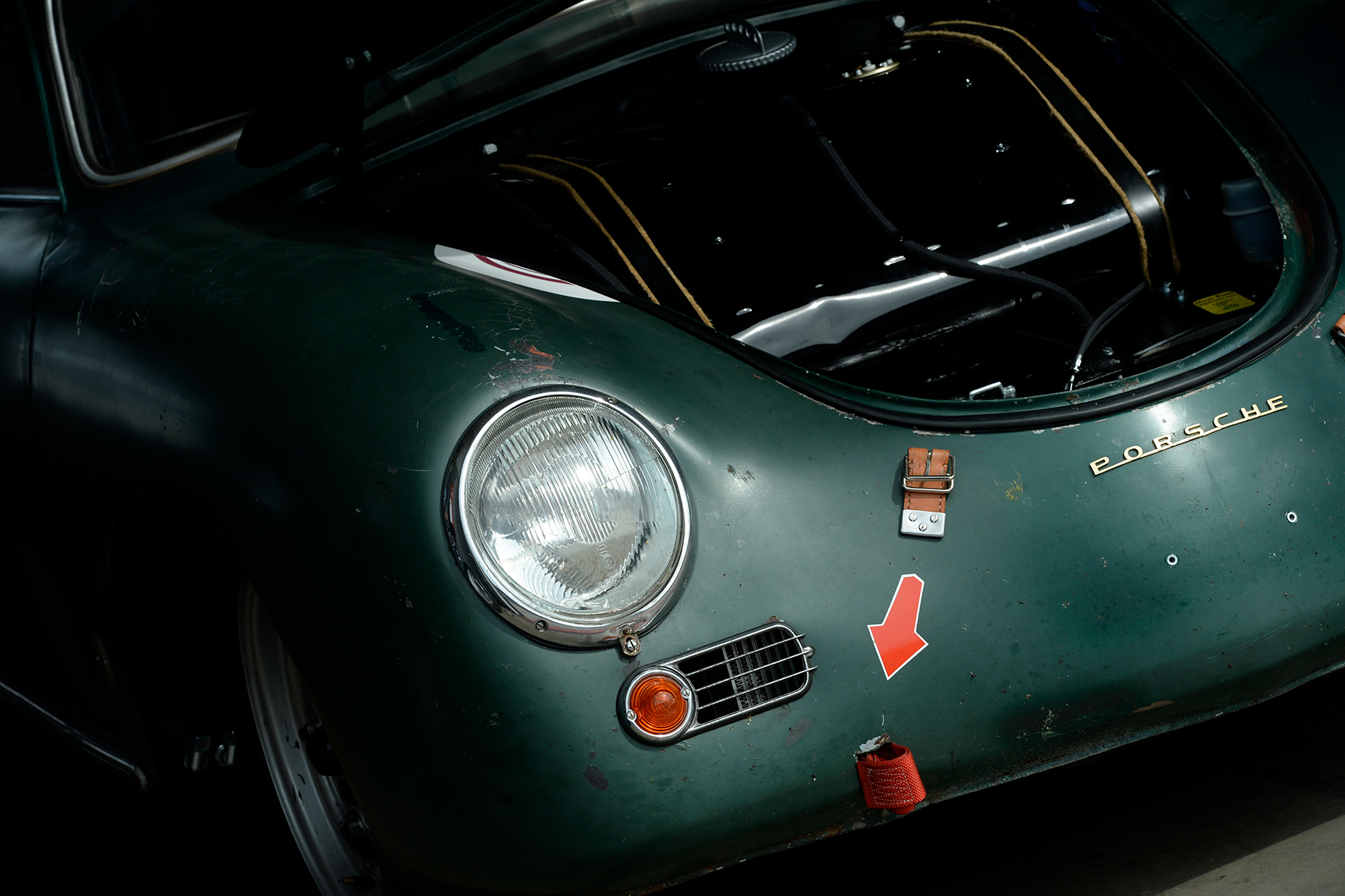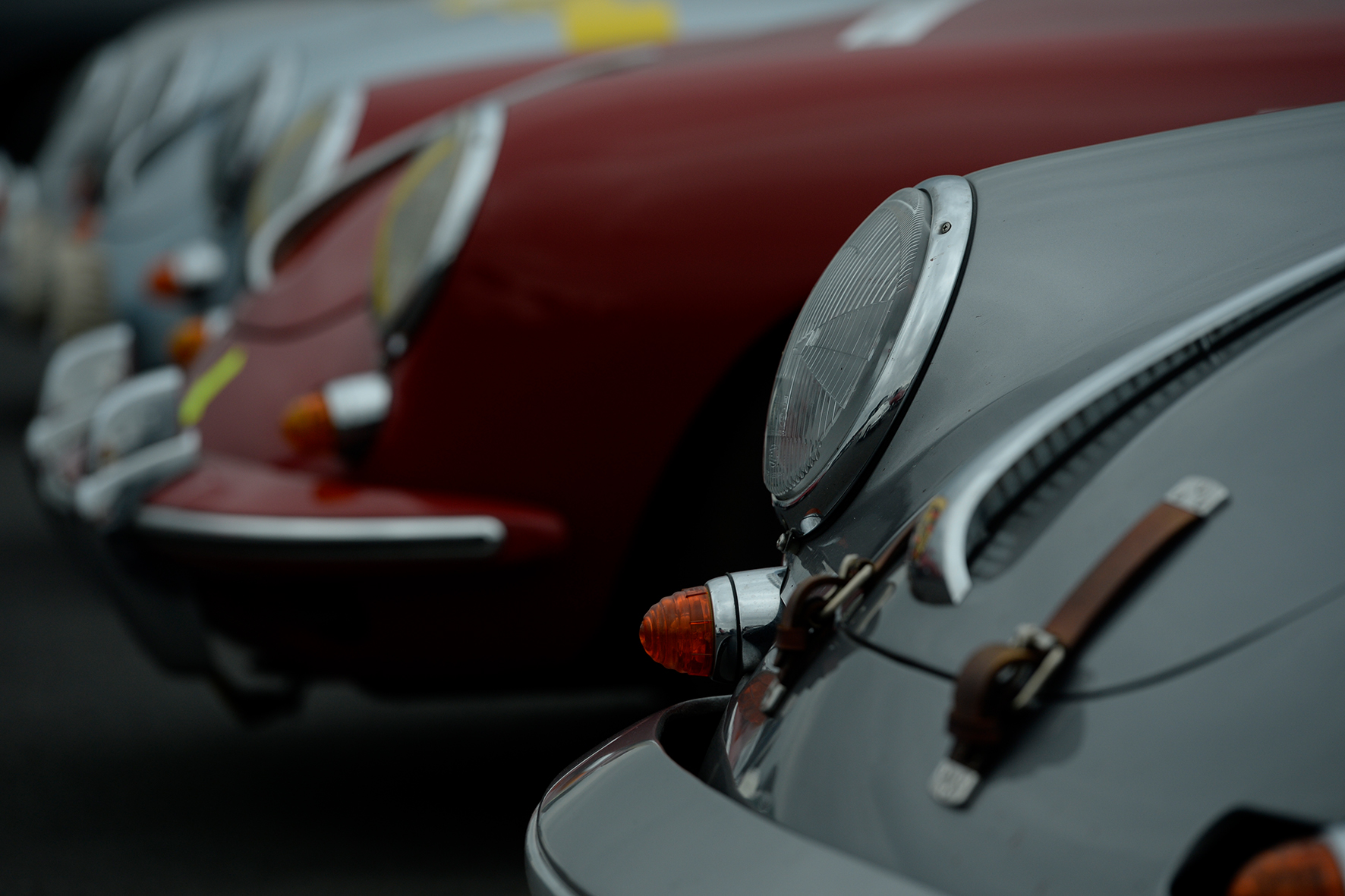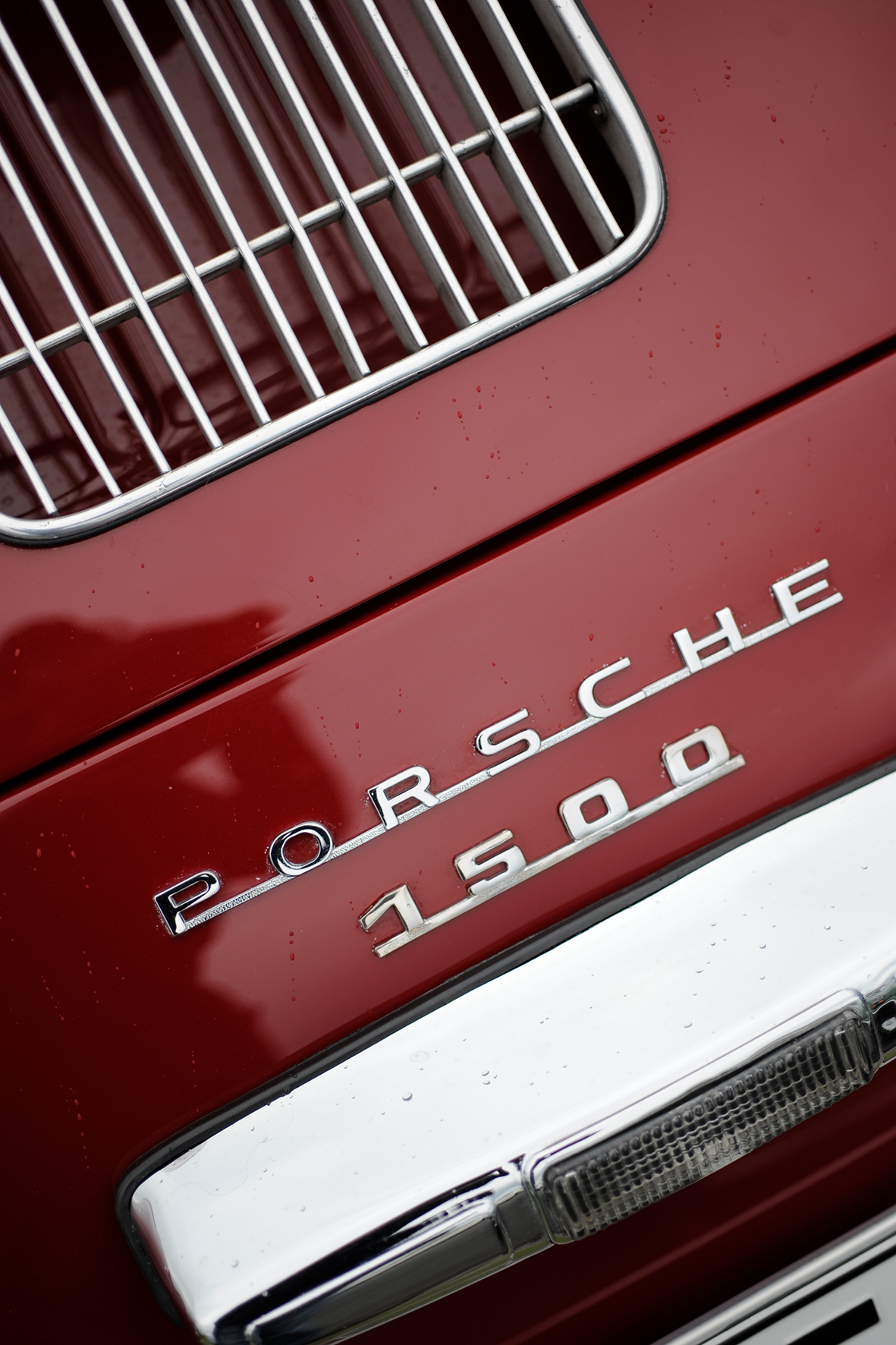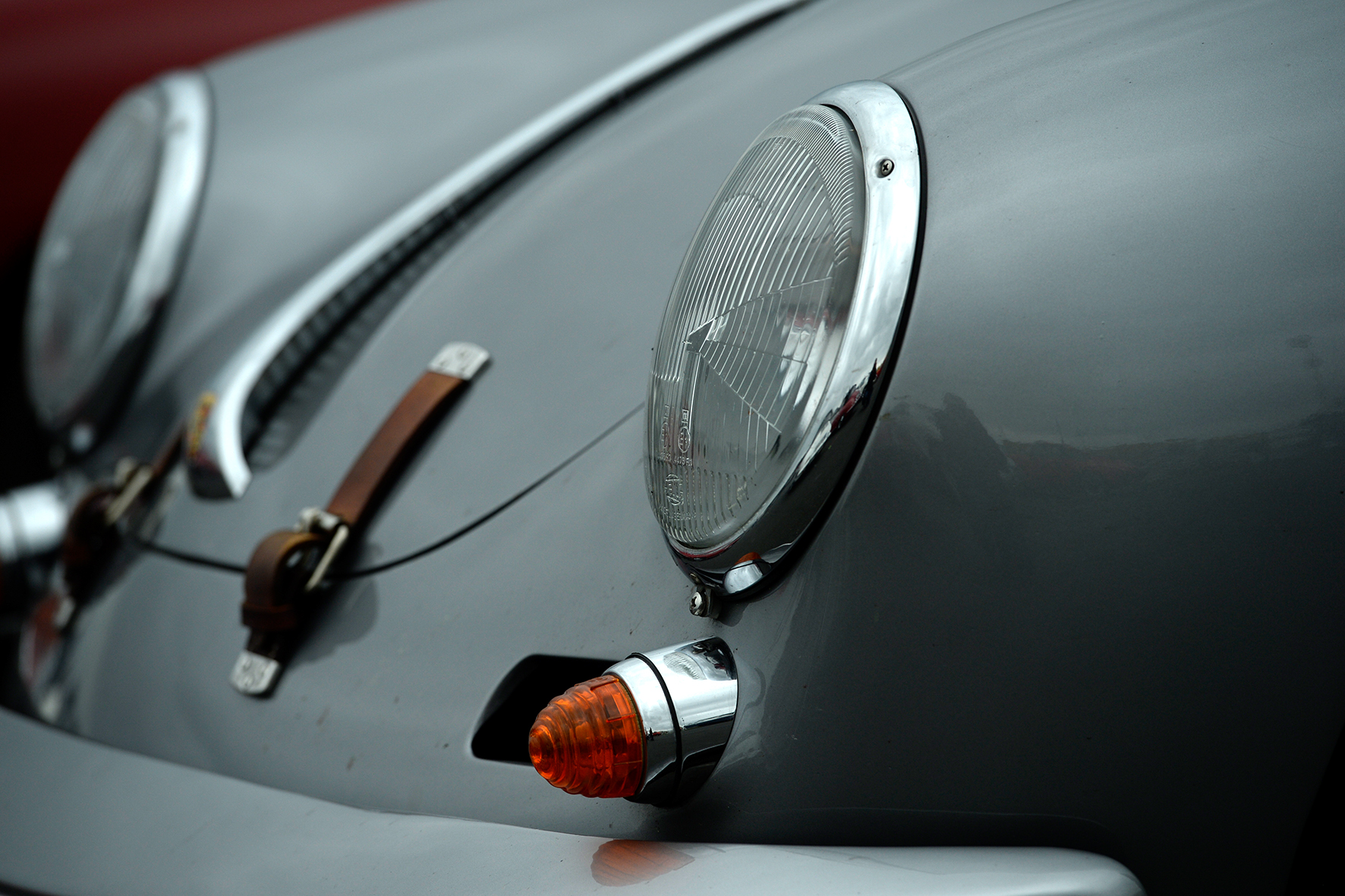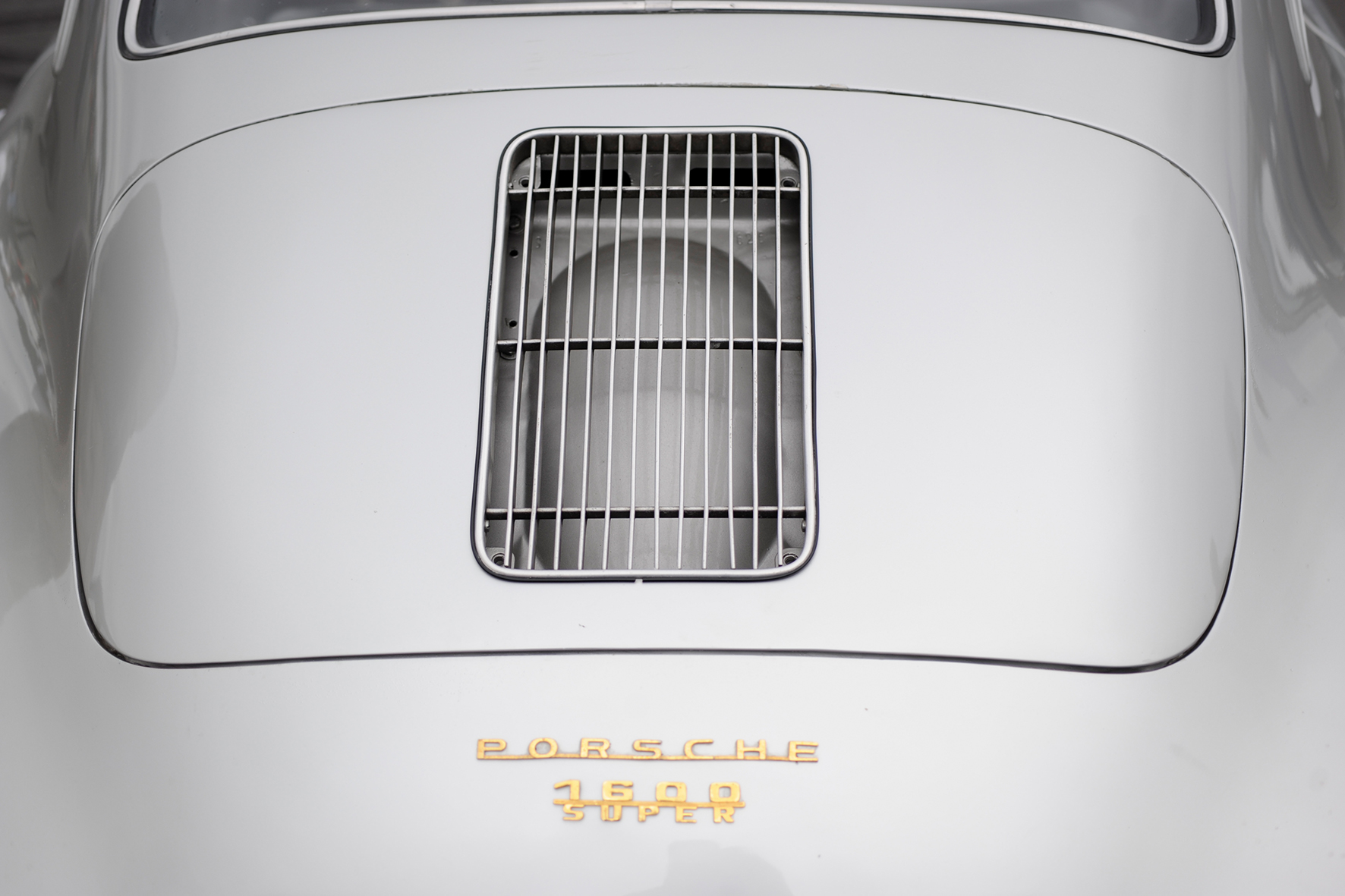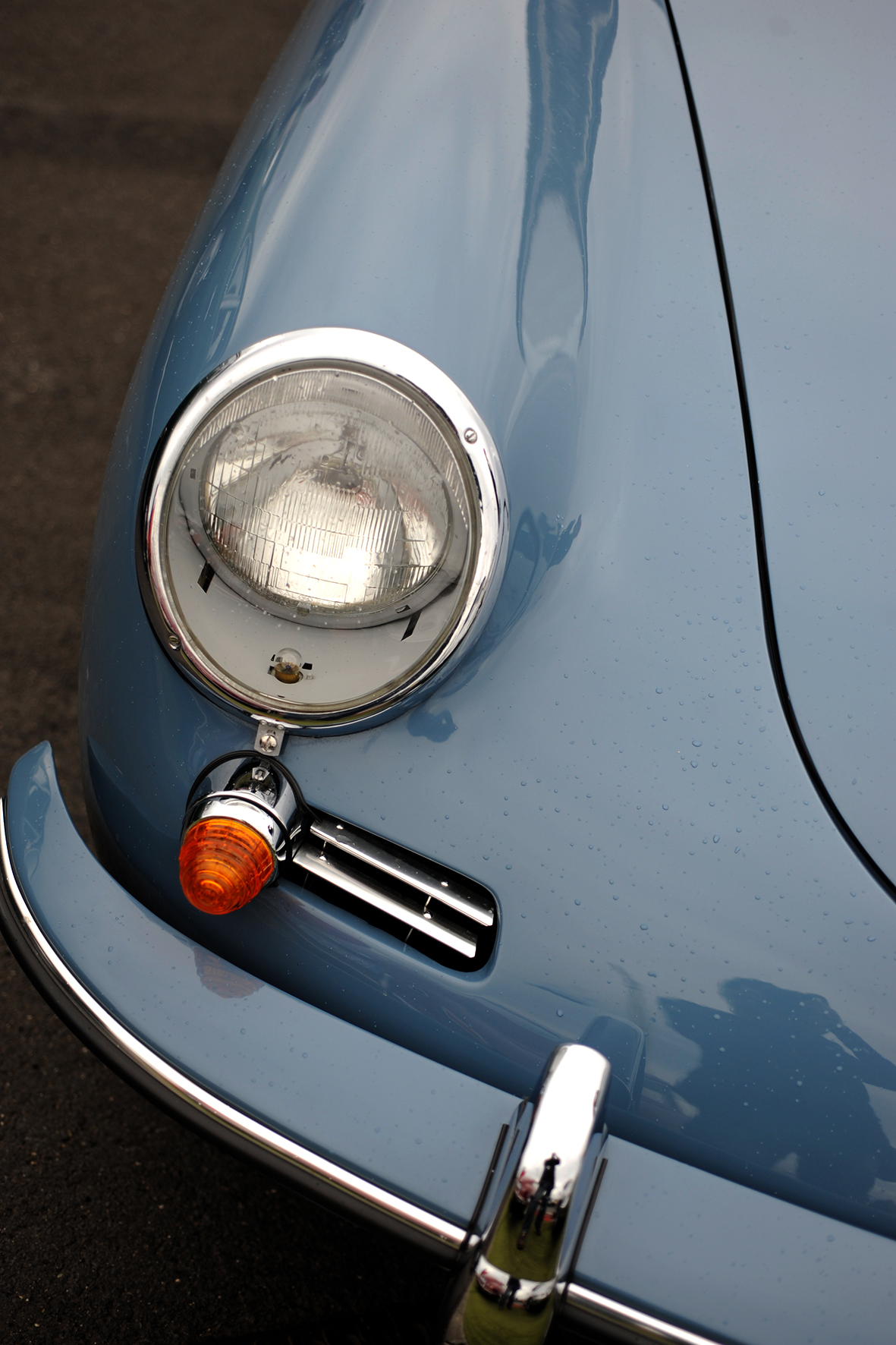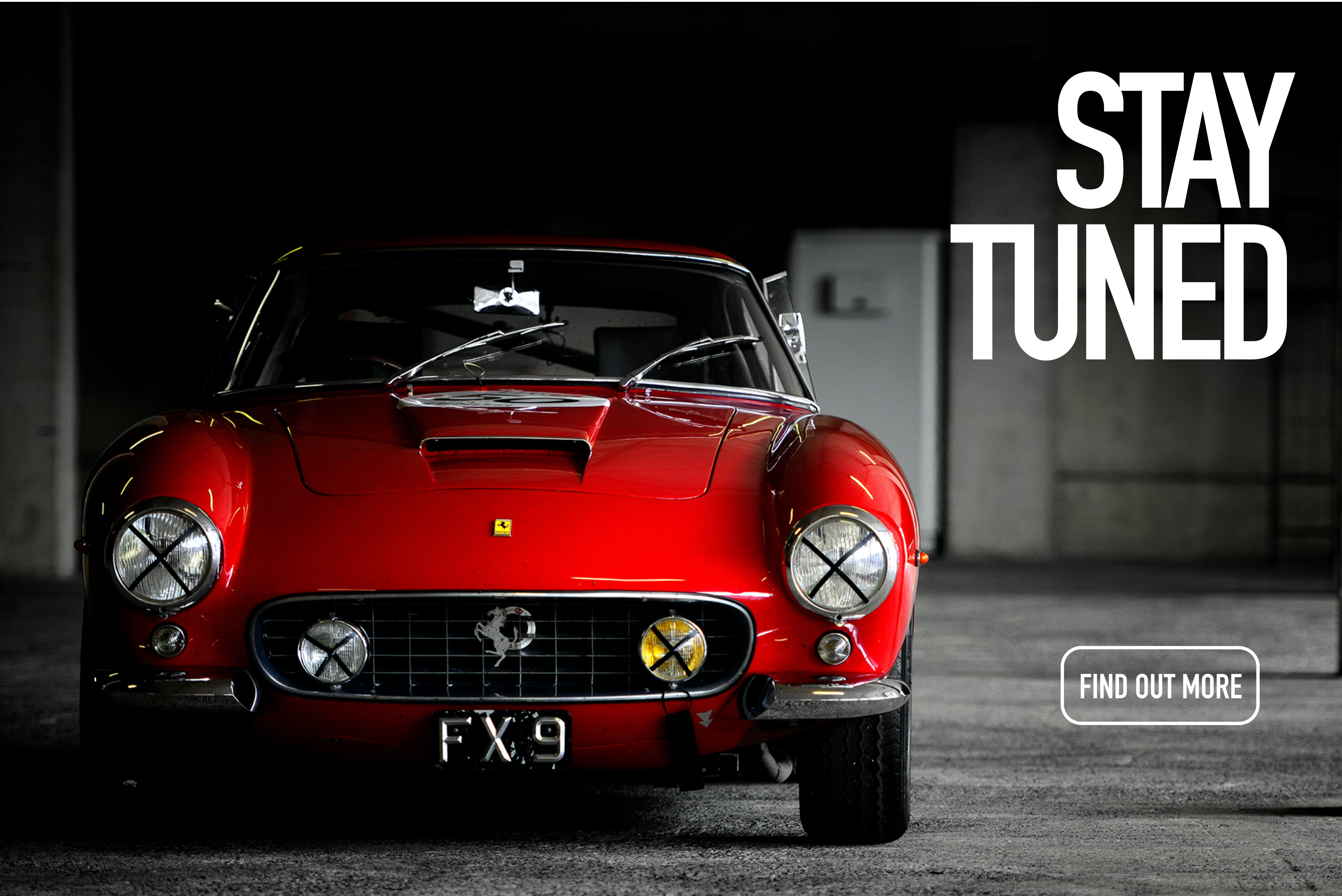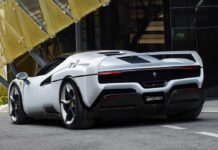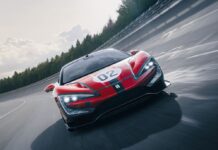What an iconic shape, what an iconic design. Nearly unchanged until today. This is a real masterpiece of automotive design: the Porsche 356.
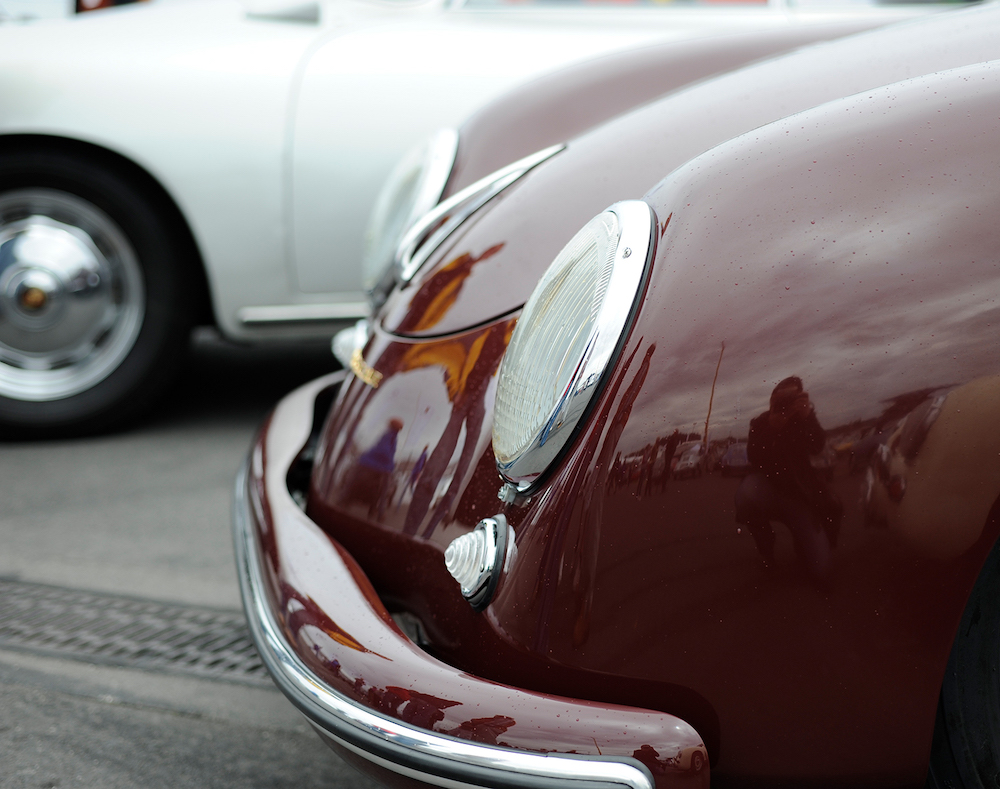
It is always a lovely part of my photographic work to catch up a 356. I really love this car. The Porsche 356 is an excellent example for Corporate Design, long time before anybody talked about these things. The shape and details are iconic and they are still the base of the Porsche myth until today.

It is the birth of the legendary myth about all Porsche road cars and of course also for the race cars.

The Porsche 356 is a sports car that was first produced by Austrian company Porsche Konstruktion GesmbH from 1948 to 1949. Then the fabulous car was produced by the German company Dr. Ing. h.c. F. Porsche GmbH in Stuttgart from 1950 to the end of the production in 1965.
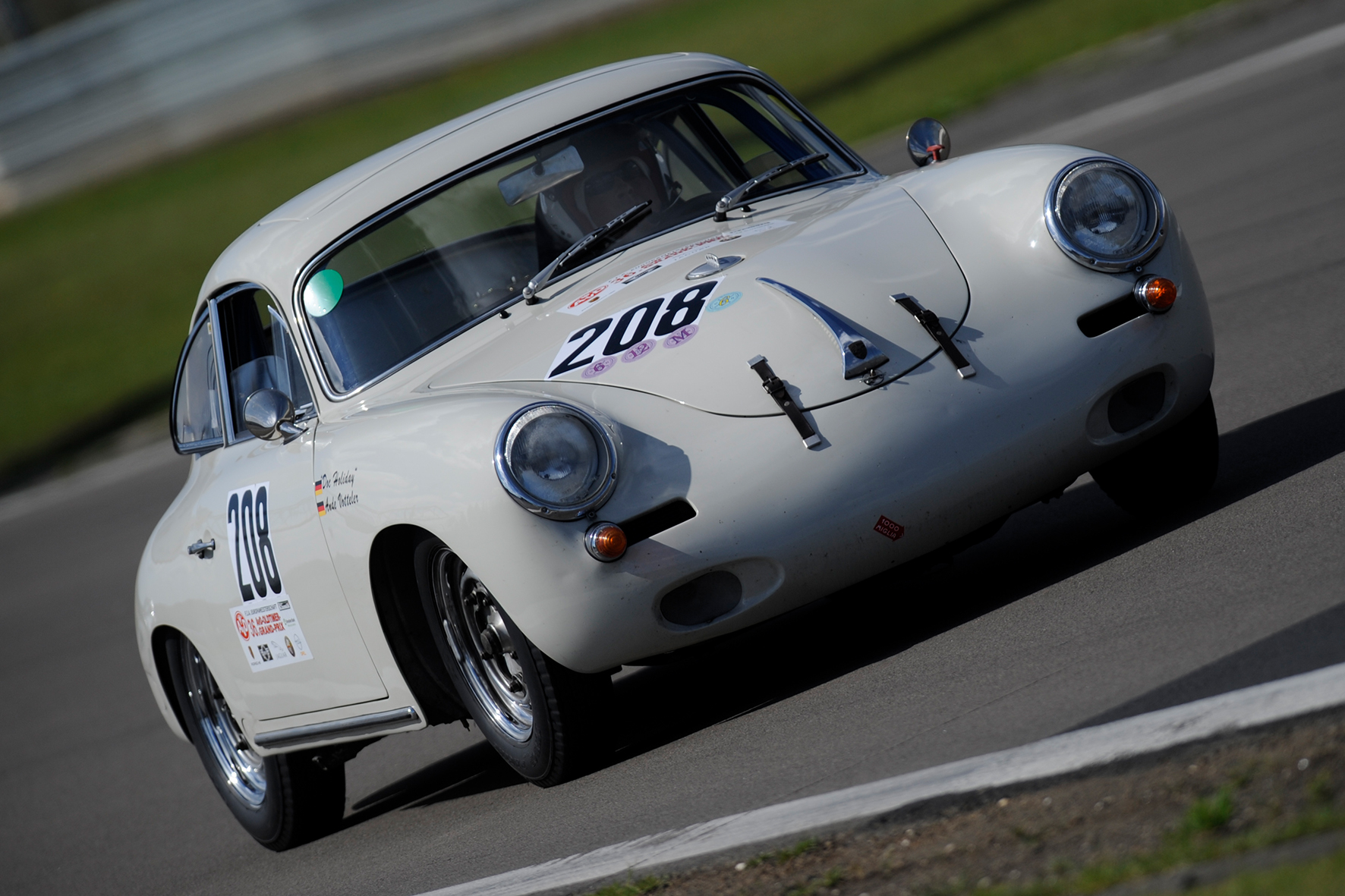
The 356 is a lightweight, rear-engine, rear-wheel drive, two-door sports car available both in hardtop coupé and open configurations. Engineering innovations continued during the years of manufacture, contributing to its motorsports success and popularity. Production started in 1948 at Gmünd in Austria, where Porsche built nearly 50 cars. In 1950 the factory relocated to Zuffenhausen nearby Stuttgart, Germany, and general production of the 356 continued until April 1965, well after the replacement model 911 made its September 1964 debut. Of the 76,000 originally produced, approximately half survived the time.

The original price in 1950 for the 356/1100 Coupé was 9800 DM, for the Cabriolet 12700 DM. Compared to the today’s value these prices seems to be a joke, but I think in 1950 not many people were able to spend 10000 DM for buying a sports car.

Before World War II Porsche designed three cars which were called Type 64 for the Berlin / Rome race in 1939 which was cancelled then. In 1948 the mid-engine tubular chassis 356 Prototype called „Number 1“ was completed. Although the original Porsche 356 unit had a rear-mid engine placement, the rear-engined 356 is considered by Porsche to be its first production model.
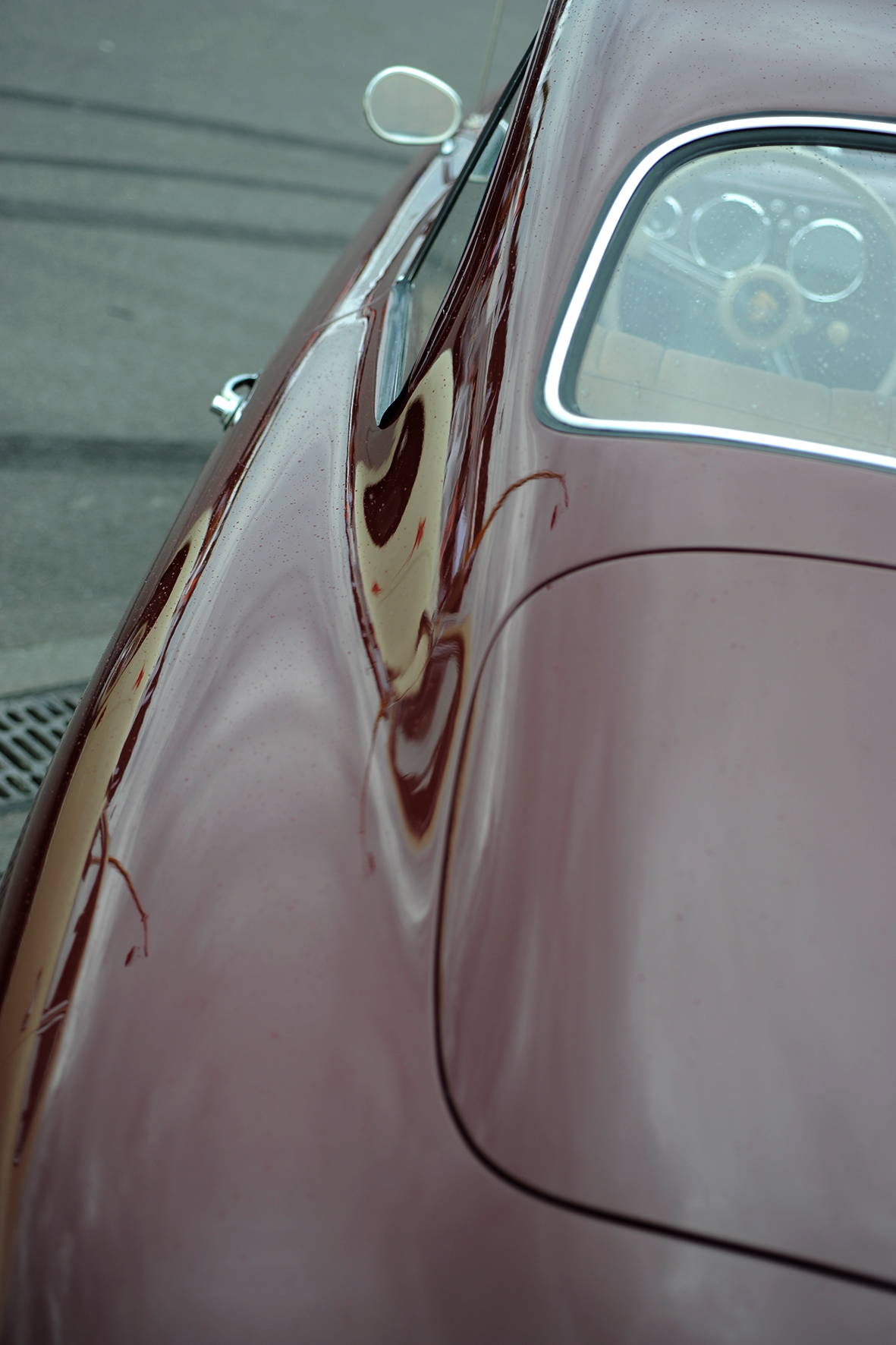
The 356 was created by Ferdinand „Ferry“ Porsche, the son of Ferdinand Porsche, founder of the German company. And he created the masterpiece shape of automobile history which influenced obviously a lot of bodywork designers, I think. The Porsche 356 was a four cylinder, air cooled, rear engine, rear wheel drive with unitized panel and body construction.
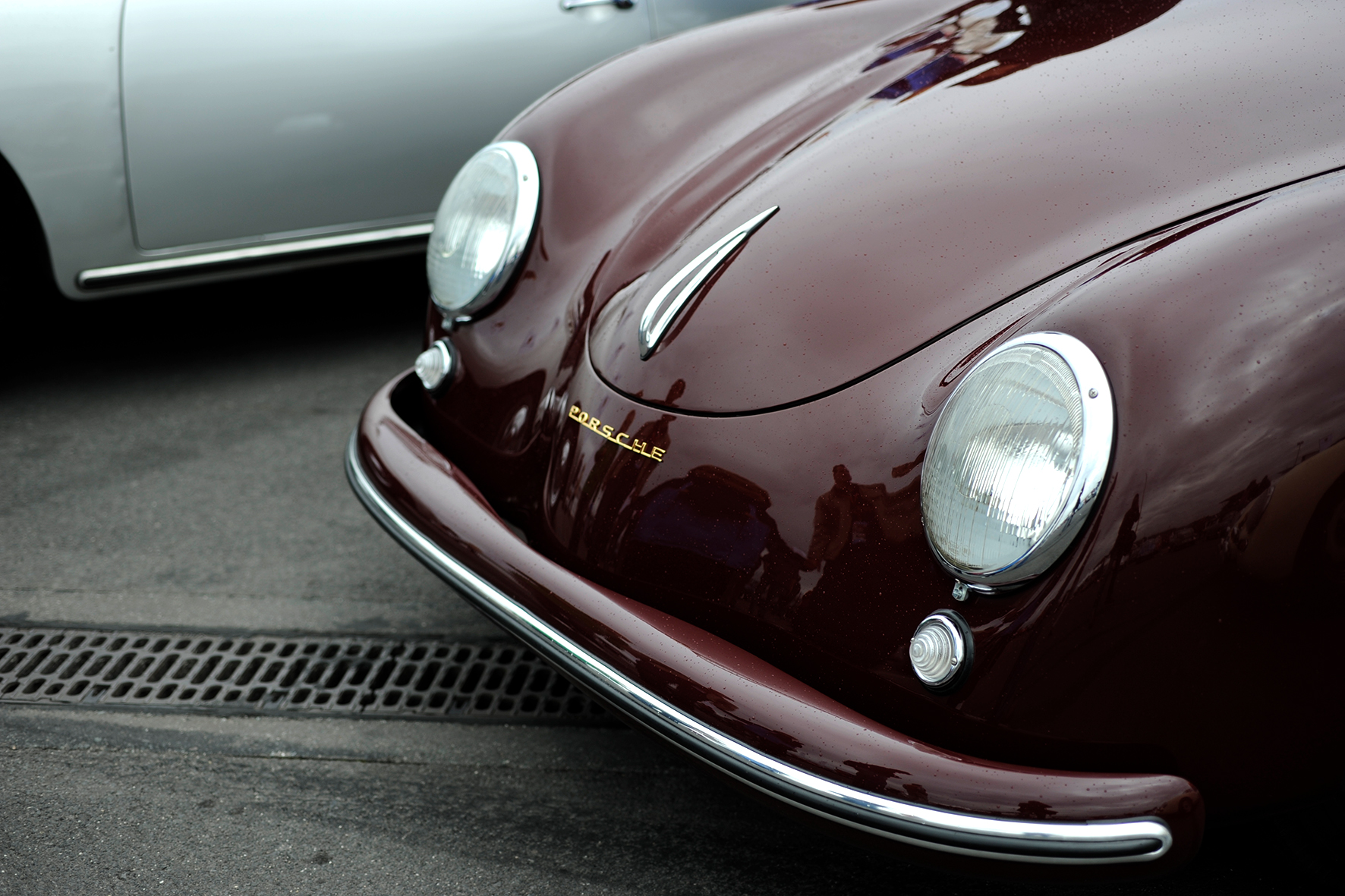
The chassis was a completely new design, as was the 356’s body, designed by Porsche employee Erwin Komenda. At the same time, certain mechanical components, including the engine case and some suspension components, were based on and initially sourced from Volkswagen. Ferry Porsche described the thinking behind the development of the 356 in an interview with the editor of “Panorama”, the PCA magazine, in September 1972. “…I had always driven very speedy cars. I had an Alfa Romeo, also a BMW, and others. ….By the end of the war, I had a Volkswagen Cabriolet with a supercharged engine, and that was the basic idea. I saw that if you had enough power in a small car, it is nicer to drive than if you have a big car which is also overpowered. And it is more fun. On this basic idea, we started the first Porsche prototype. To make the car lighter, to have an engine with more horsepower…that was the first two-seater that we built in Gmünd“.
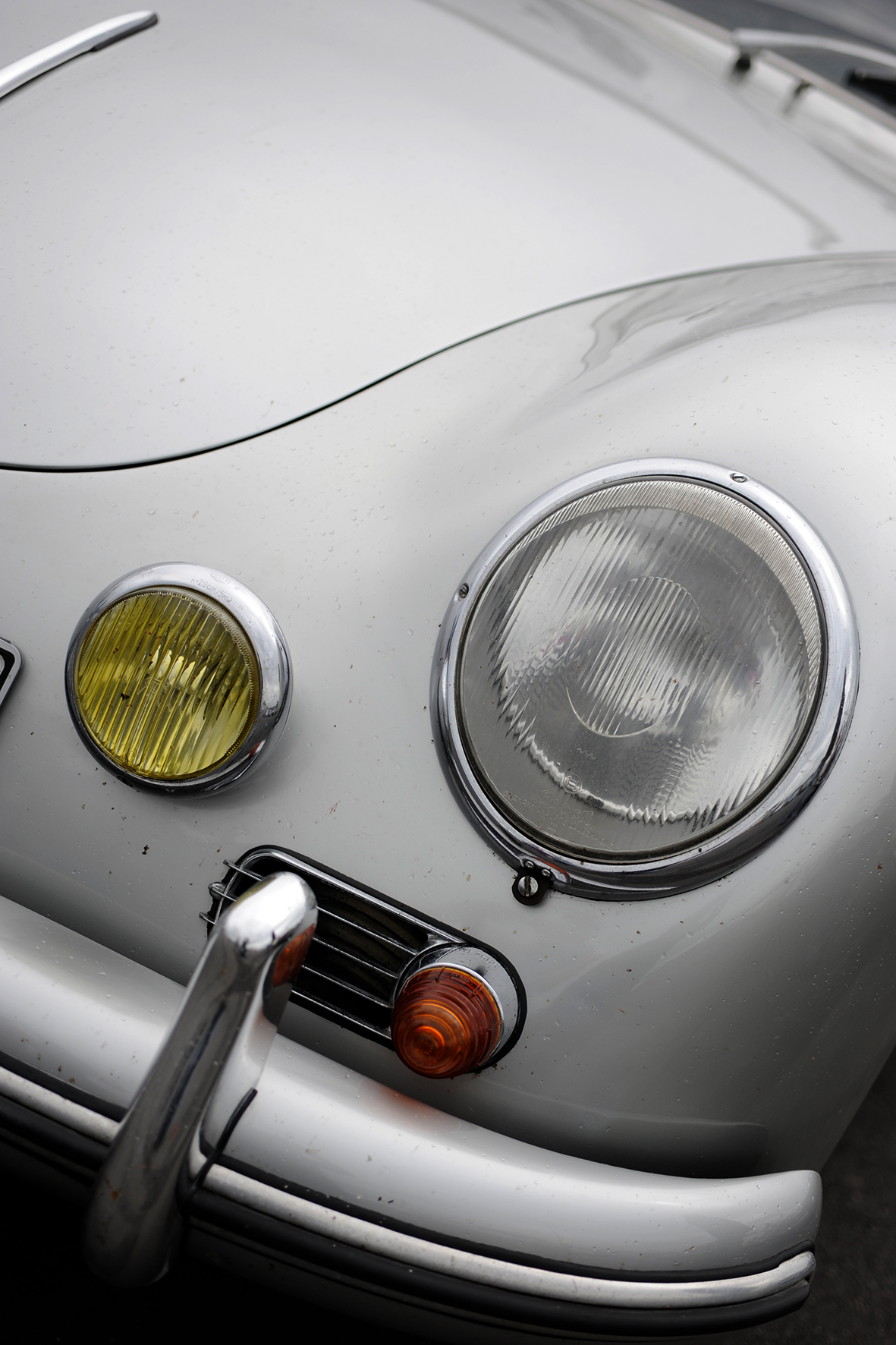
The first 356 was road certified in Austria on June 8, 1948, and was entered in a race in Innsbruck, where it won its class. Porsche re-engineered and refined the car with a focus on performance. Volkswagen and Porsche shared fewer parts as the 1950s progressed. Porsche handcrafted the early 356 automobile bodies at Gmünd in aluminum, but when production moved to Zuffenhausen, Germany, in 1950, models produced there were steel-bodied. The aluminum-bodied cars from that very small company are what are now referred to as “prototypes”. Porsche contracted Reutter to build the steel bodies and eventually bought the Reutter company in 1963. The Reutter company retained the seat manufacturing part of the business and changed its name to „Recaro“. But this is a maybe new story, sometimes.
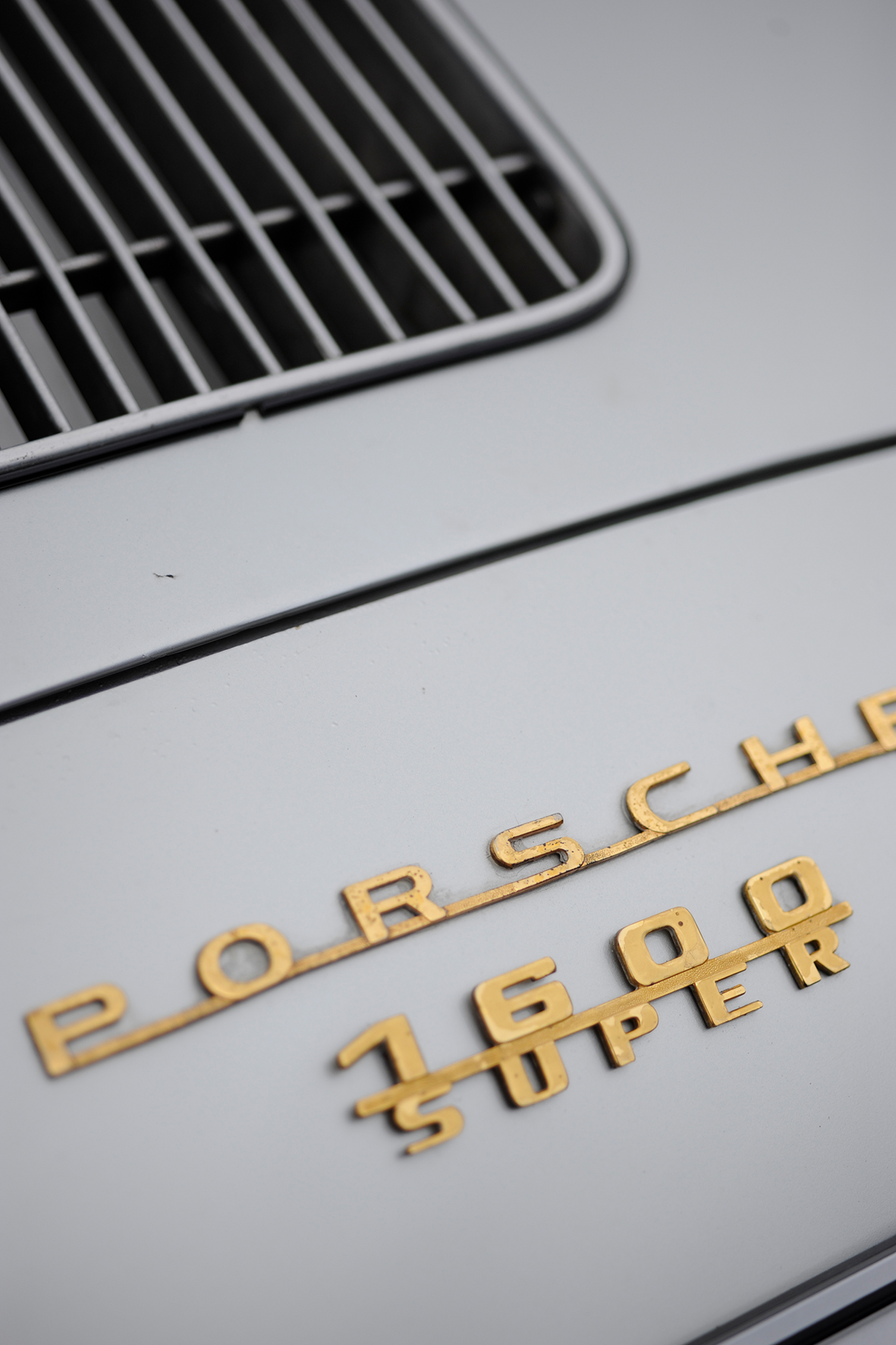
Little noticed at its inception, mostly by a small number of auto racing enthusiasts, the first 356s sold primarily in Austria and Germany. It took Porsche two years, starting with the first prototype in 1948, to manufacture the first 50 automobiles. By the early 1950s the 356 had gained some reputation among enthusiasts on both sides of the Atlantic for its aerodynamics, handling, and excellent build quality. The class win at Le Mans in 1951 was very important. It was common for owners to race the car as well as drive them on the public roads.
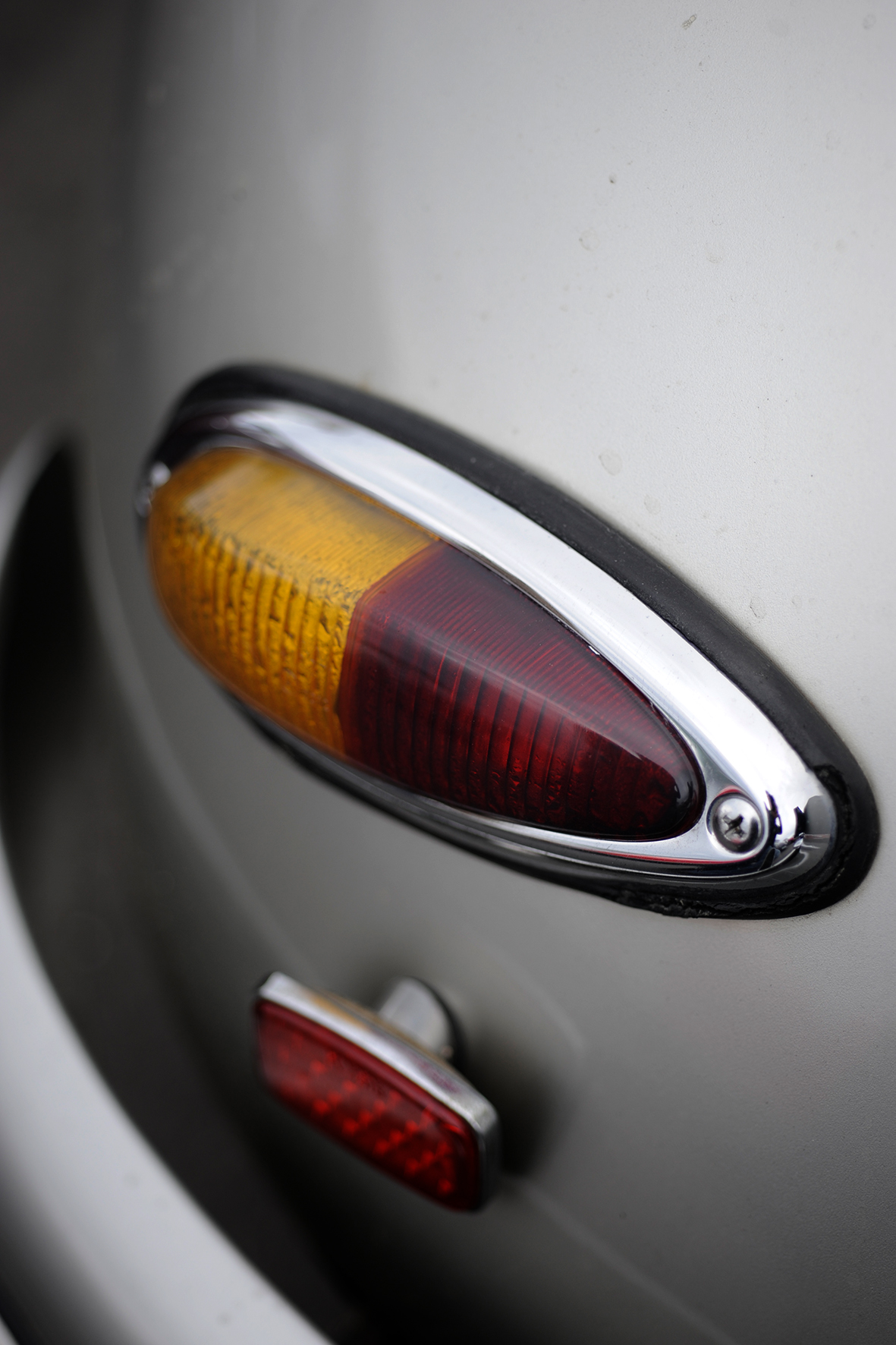
Every time when I see a Porsche 356 today the first thing I notice is, how small the car is, almost a bit tiny and fragile, but this is the essence of what Ferdinand Porsche said in this interview above, a small fast car is more fun than a big fast car. I think he was right with this. And the Porsche 356 looks good even today, not modern but the classic shape of a sports car with many stylish details.
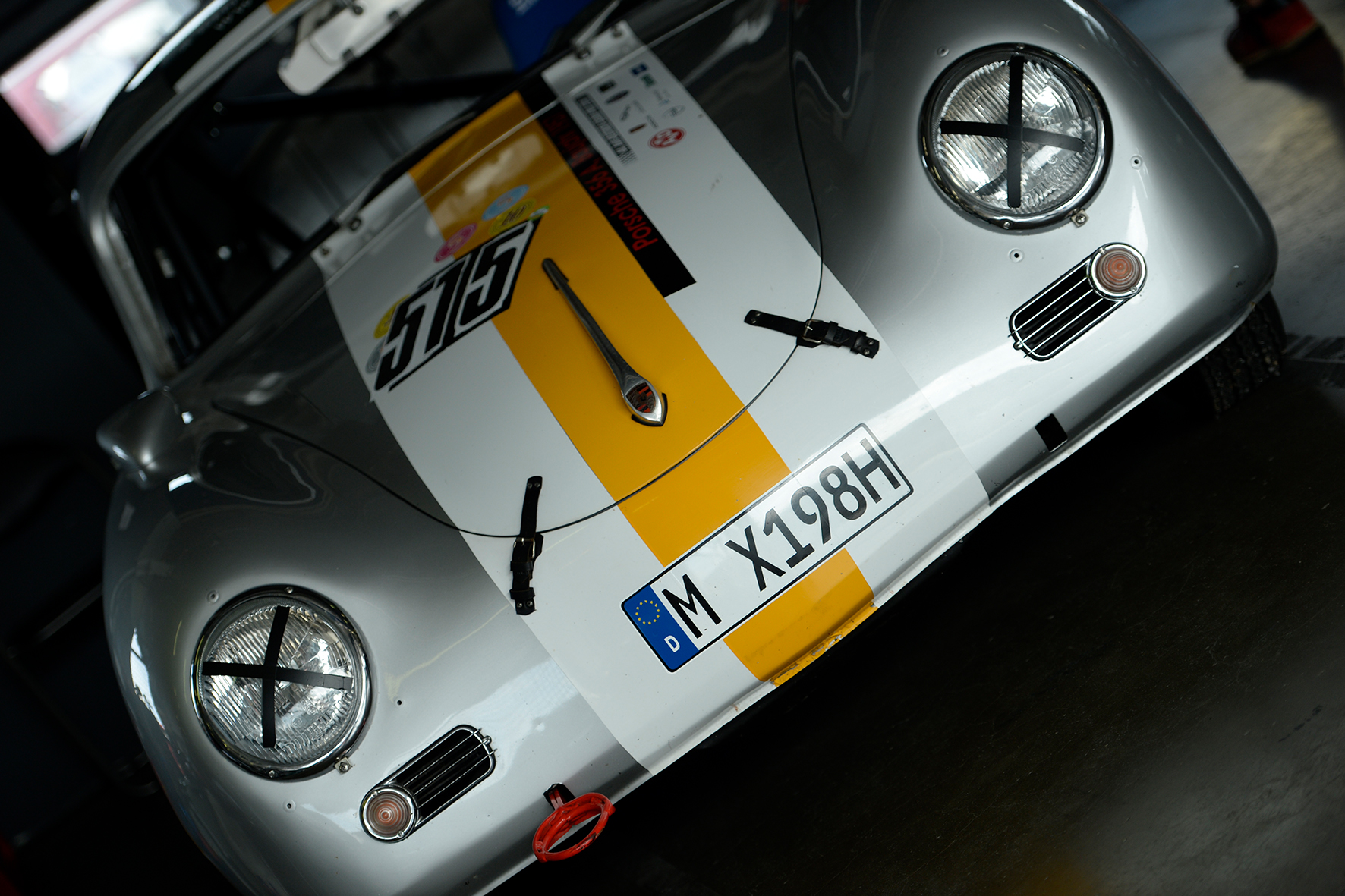
Another nice fact about a Porsche 356 is that on December 2015, the most expensive 356 to sell was the daily driver of rock singer and sixty years icon Janis Joplin that was sold in New York by RM Sotheby’s for $1,760,000.
PORSCHE 356 – TECHNICAL SPECIFICATION
MODEL 356 / 1600 Super 90
TYPE Coupé, Hardtop-Coupé, Cabriolet, Roadster
YEAR OF PRODUCTION September 1959 – September 1961
CONSTRUCTORS Ferdinand „Ferry“ Porsche
ENGINE rear-mounted V4 flat
BORE AND STROKE 82,5 mm x 74 mm
CUBIC CAPACITY 1582 cc
VALVE TRAIN SOHC, 2 Valve per cylinder
ASPIRATION naturally aspirated
TRANSMISSION 4-speed, 1 reverse synchronized
HORSEPOWER 90 bhp at 5500 rpm
WHEELBASE 2100 mm
LENGTH 3870 mm – 4010 mm
WIDTH 1660 mm
HNEIGHT 1220 mm – 1320 mm
WEIGHT WITHOUT FUEL 771 kg – 1041 kg
TYRES 5.60 Sport or 165 R 15
FUEL CAPACITY 52 liters incl. 5 liters reserve
MAXIMUM SPEED 180 km/h

